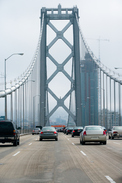
After a tenant moves in and/or takes possession, a landlord must take reasonable precautions to prevent injury due to any unsafe condition in an area of the premises under the landlord's control if the landlord knows or reasonable should have known about it. (CACI 1006).
To make a premises liability injury claim due to unsafe conditions on the rented property, the tenant-claimant must show that the landlord was negligent in the use or maintenance of the property if (1) a condition on the property created an unreasonable risk of harm; (2) the landlord knew or, through the exercise of reasonable care, should have known about it; and (3) the landlord failed to repair the condition, protect against harm from the condition, or give adequate warning of the condition. (CACI 1003).
To establish a landlord's negligence and impose liability for injuries suffered due to the defective condition of the premises, the owner must have either actual or constructive knowledge of the dangerous condition or have been able by the exercise of ordinary care to discover the condition, which if known to him, he should realize as involving an unreasonable risk to those on his premises. The owner's negligence in such cases is founded upon his failure to exercise ordinary care in remedying the defect after he has discovered it. Louie v Hagstrom's Food Stores, Inc. (1947).
 RSS Feed
RSS Feed
